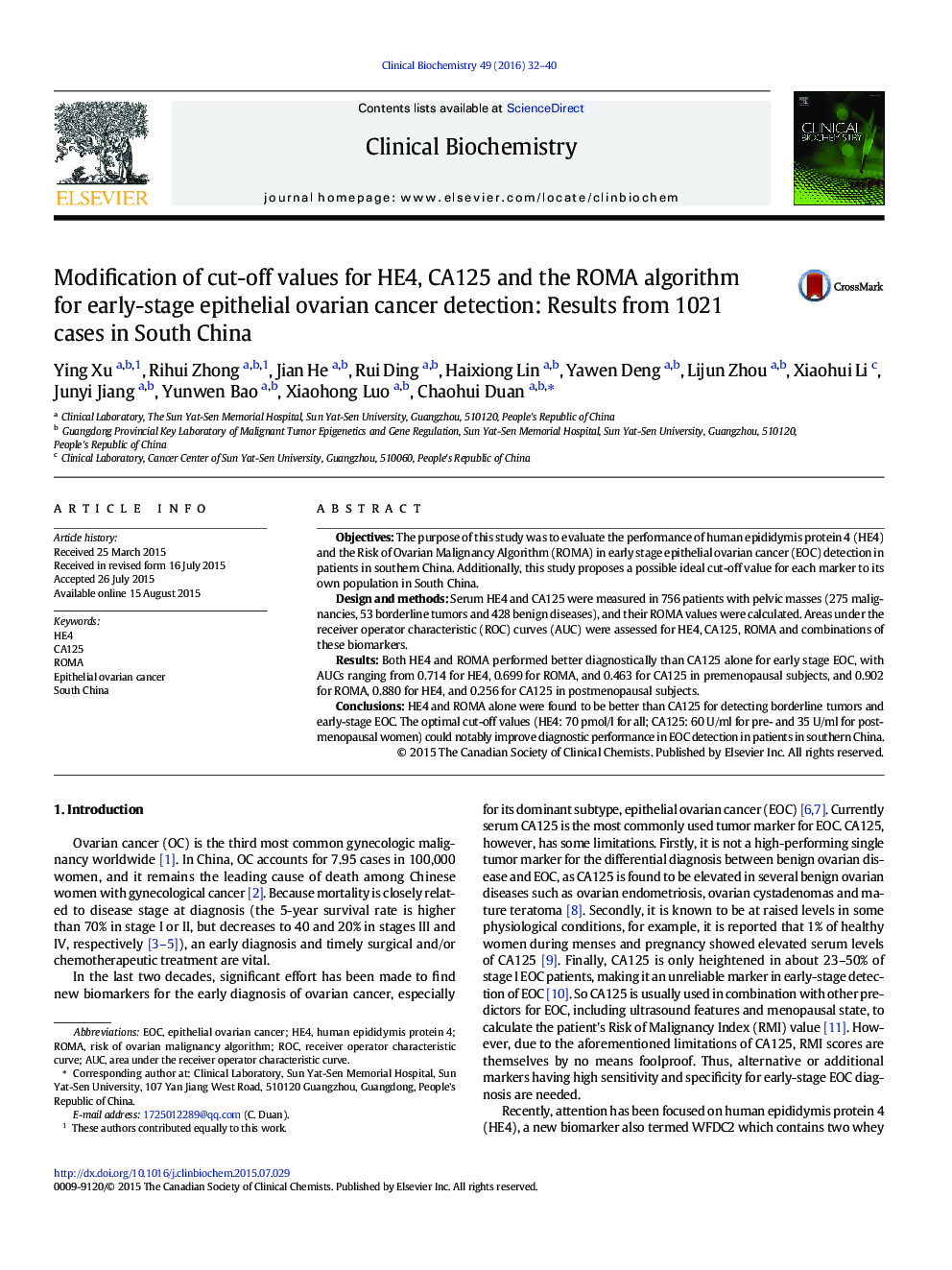| Article ID | Journal | Published Year | Pages | File Type |
|---|---|---|---|---|
| 1968572 | Clinical Biochemistry | 2016 | 9 Pages |
•HE4 is a better predictor of malignancy than is CA125 in patients with a pelvic mass.•HE4 provides for improved diagnosis of early-stage EOC of over CA125.•An alternate cutoff value of HE4 was obtained by analyzing 1021 cases in South China.
ObjectivesThe purpose of this study was to evaluate the performance of human epididymis protein 4 (HE4) and the Risk of Ovarian Malignancy Algorithm (ROMA) in early stage epithelial ovarian cancer (EOC) detection in patients in southern China. Additionally, this study proposes a possible ideal cut-off value for each marker to its own population in South China.Design and methodsSerum HE4 and CA125 were measured in 756 patients with pelvic masses (275 malignancies, 53 borderline tumors and 428 benign diseases), and their ROMA values were calculated. Areas under the receiver operator characteristic (ROC) curves (AUC) were assessed for HE4, CA125, ROMA and combinations of these biomarkers.ResultsBoth HE4 and ROMA performed better diagnostically than CA125 alone for early stage EOC, with AUCs ranging from 0.714 for HE4, 0.699 for ROMA, and 0.463 for CA125 in premenopausal subjects, and 0.902 for ROMA, 0.880 for HE4, and 0.256 for CA125 in postmenopausal subjects.ConclusionsHE4 and ROMA alone were found to be better than CA125 for detecting borderline tumors and early-stage EOC. The optimal cut-off values (HE4: 70 pmol/l for all; CA125: 60 U/ml for pre- and 35 U/ml for postmenopausal women) could notably improve diagnostic performance in EOC detection in patients in southern China.
